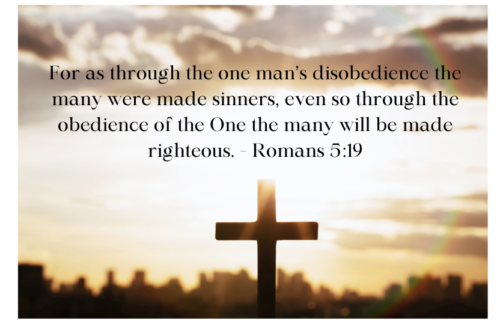
Jesus the Savior
She will give birth to a Son; and you shall name Him Jesus, for He will save His people from their sins. – Matthew 1:21
It’s a familiar verse, no? I heard it during Advent every year and thought, I don’t really get the connection between the name and the savior business, but that’s nice. If that’s you, buckle up, buttercup.
Let’s set the scene. Joseph has discovered that his sweet little betrothed is pregnant. He decides to divorce her discreetly because he’s a stand-up guy. But an angel appears to him in a dream. (From the Gospel of Luke, we find that Gabriel has appeared to both Zechariah and Mary. My guess it was Gabriel, but the text doesn’t say.) The angel reassures him that Mary hasn’t betrayed him. She’s pregnant by the Holy Spirit.
She’s what?
Joseph doesn’t have to wait for the other shoe to drop. The angel continues.
She will give birth to a Son; and you shall name Him Jesus, for He will save His people from their sins. – Matthew 1:21
The significance of this verse is lost on a modern, Gentile audience. But Matthew was writing to a Jewish audience, and the angel was speaking to the current heir to the Throne of David. They knew exactly how powerful those words were.
- Matthew was written in Greek, the common written language of the Roman Empire – what we translate as Jesus was iesous.
- But in Israel, Aramaic was the standard spoken language. The angel would surely have spoken to Joseph in Aramaic. He would have said, “You shall name him Yeshua.”
- Yeshua is the Aramaic for Yehoshua in Hebrew. Where do we see Yehoshua in the Bible? Joshua. Who happens to be a type of Christ – defeating Israel’s enemies and leading the people into the Promised Land.
- And Yehoshua means . . . Yahweh is salvation.
But we’re not done.
What does YHWH mean? 
YHWH is the tetragrammaton, the four consonants of Yahweh. The a and e were added so we could pronounce it.
Hebrew reads right to left. The characters above are yod, heh, vav, heh. We see from Yehoshua that Yahweh = salvation. But every Hebrew letter also carries meaning, sometimes multiple meanings, like aloha.
Yod: It’s the little one that looks like a fist. It means hand.
Heh: It can stand for the breath of God or His essence or His Spirit. It can also mean behold.
Vav: It looks like a nail or a peg, something you would hang things from.
Put it together:
Behold the nail. Behold the hand.
Behold the nailed hand.
The name Yahweh first occurs in Genesis 2, Yahweh Elohim. The focus of the chapter of God’s relationship to man. Yahweh is seen as God’s covenant name. From Yahweh’s first conversation with Adam, he foretold his saving power in the person of Jesus.
Behold the nailed hand is salvation.
As someone from East Texas once said, “If that don’t light your fire, your wood’s wet.”
Jesus points to the Father, and the Father points to Jesus.
For more information on the name Yahweh, check out this article from Compass International.

This study on the names of God is inspired by Ann Spangler’s Praying the Names of God for 52 Weeks




